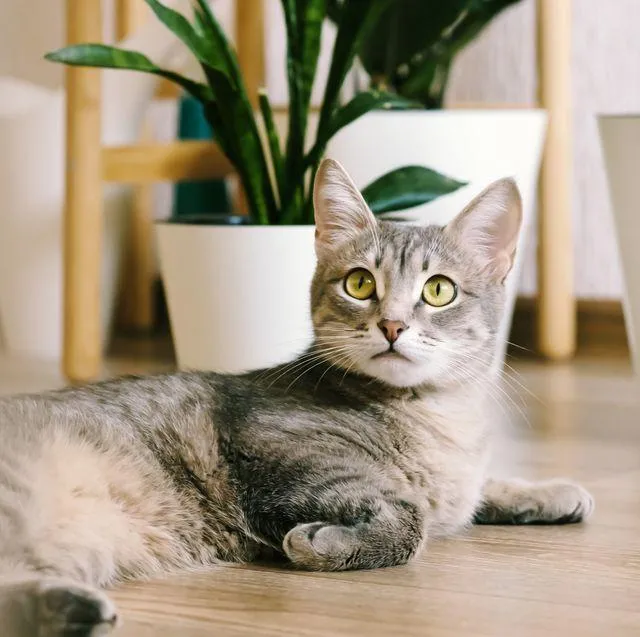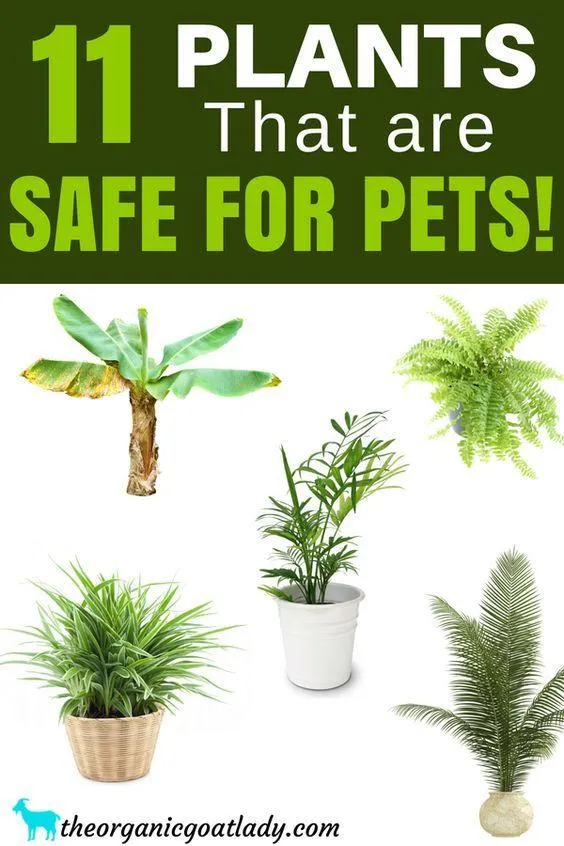The Best Houseplants That Won’t Bother Your Pets
Whether you share your home with cats or dogs, it’s natural to want to decorate with living greenery. However, not all common houseplants are safe if ingested by our furry companions. In this article, I’ll discuss houseplants that are generally considered non-toxic for pets as well as some things to watch out for based on my own experiences caring for both plants and pets.
Succulents
- Succulents like aloe vera, echeveria, haworthia and senecio are at the top of the list for pet-friendly plants. From my experience, succulents are very hard to damage since their thick leaves and waxy coatings make them unappealing to nibble. At the same time, their varied shapes and colorful leaves add lovely visual texture to any space.
- If you have a particularly determined chewer, be sure to place succulents out of direct paw/mouth reach. But in general, these drought-resistant beauties pose little risk even if sampled by accident.
Peace Lilies
Peace lilies (Spathiphyllum) deliver gorgeous white blooms without endangering animals. My friend’s dog has never shown interest despite having full access to her many lily plants. While all parts are technically non-toxic, the stiff leaves and unpleasant taste should consistently deter pets. Just be warned – peace lilies can irritate skin on contact so keep them out of reach if your pet has sensitivity issues.
Spider Plants
With trails of green-and-white stripes cascading from their centers, spider plants (Chlorophytum comosum) are an aesthetically pleasing choice for animal owners. In my experience, the wiry texture and lack of strong smell means these beauties pass right by most pets without a second glance. They’re also virtually impossible to kill so they make the perfect low-maintenance addition near areas where pets spend time. Watch for the plantlets that form along the trails, however, if you have very curious nibblers in the home.
Snake Plants
Snake plants, or mother-in-law’s tongue (Sansevieria trifasciata), have a texture that sort of resembles grass so some dogs like to nibble as they investigate. However, the stiff, pointed leaves are usually unappreciated to canine and feline taste buds after an initial sample, in my experience. While toxic in large doses, a nibble here and there from a curious pet shouldn’t cause concern. Snake plants are also extremely durable and tolerate low-light conditions well. All in all, they’re a nice durable addition that usually goes undisturbed by pets.

So in summary, with those pet-friendly options – succulents, peace lilies, spider plants and snake plants – you can basically deck your halls with gardening glory while keeping furry companions safe. But is it worth displaying plants that require extra vigilance? Let’s explore some alternatives.
Often when choosing plants for homes with pets, the goal is to select kinds that are not only non-toxic but also don’t pose other risks when sampled. From my experience providing home health guidance, it’s best to err on the extremely cautious side with pets since signs of illness may not appear for hours. Here are some thoughts on balancing plant enjoyment with pet safety:
Rather than displaying toxic plants out of reach, consider replacing them altogether with Species that actively deter inquisition. Pets learn through natural instincts, so it’s kinder to furnish an environment without tantalizing threats. Choosing plants with thorns, volatile oils or foul textures teaches avoidance from the start.
Alternatively, you could create separate pet-free plant display areas using furniture, barriers or by placing pots higher up. Out of sight means out of immediate mind for noses on a mission. Separating plants from pet territories allows enjoyment of a wider variety without constant supervision.

At the same time, don’t underestimate determination. No barrier is foolproof when instinct strikes. So again, selecting Species inherently uninteresting to pets provides peace of mind. Fences work better as complements to choosing plants built to withstand accidental encounters.
Rather than chancing illness, consider lower-risk decor like artificial plants, photos of greenery or non-botanical décor for areas pets frequent. Prioritizing safety preserves health and wellness, which should come before aesthetic preferences in shared living spaces, in my view. Compromising is caring for all family members.
To sum up, while many common houseplants pose little threat with standard care, it’s best to choose Species with natural protections built-in as your pets’ first line of plant defense. Restricting access and keeping watch help too, but selecting plants disinterested by nature provides the greatest reassurance – as well as fewer opportunities for accidents to happen when supervision lapses. With some planning, you truly can decorate beautifully while keeping both pets and plants happy.
Non-Toxic Houseplants for Pets

| Plant | Toxicity Level | Notes |
|---|---|---|
| Peace Lily | Low | Very pet-friendly houseplant that is easy to care for. |
| Spider Plant | Non-Toxic | Great for hanging baskets or as a table centerpiece. Pets can chew on the long strappy leaves safely. |
| Pothos | Non-Toxic | Hardy vine perfect for draping over shelves or decorative pots. Highly pet-safe. |
| Snake Plant | Low | Striking upright leaves that are nearly impossible to kill. Filter out pet hair and dander efficiently. |
| Chinese Evergreens | Low | Come in various colorful leaf patterns. May cause mild upset if large amounts ingested. |
FAQ
-
Are there any houseplants that are safe around cats and dogs?
Yes, basically there are quite a few houseplants that won’t hurt pets if they eat them or chew on them. Some good options include snake plants, English ivy, bamboo palm, peace lilies, and pothos. Those tend to be pretty safe.
-
What about common houseplants – are those pet-safe?
Most common plants like pothos, peace lilies, and spider plants are usually alright for pets. However, you gotta watch out for certain ones. For example, lilies can be really bad for cats if they ingest any part of the plant. So it’s best to do some research if you have uncommon plants too, just to be on the safe side.
-
Should I be worried about my pet nibbling on plants?
For the most part, if your pet just nibbles or mouths houseplants a bit, it’s probably not a huge deal as long as it’s from the safe list. They’d have to eat a lot before it would get real sick. At the same time, you don’t want to encourage plant-mouthing either. So remove any obvious chewed leaves and keep an eye out. Hopefully your pet won’t acquire a taste for greenery!
-
Is it okay to use fertilizer or plant food when pets are around?
You’ll want to choose pet-safe fertilizers and plant foods when using them in areas your pets have access to. Some plant fertilizers contain substances like traces of copper or other ingredients that could potentially be harmful in large doses if ingested by pets. Stick to organic, all-natural fertilizers and use them sparingly if cats or dogs may contact the soil.

-
What are some plants to avoid with pets?
Plants you’ll definitely want to keep out of reach include lilies, tulips, daffodils, hydrangeas, aloe vera, and oleander. They can cause serious issues for pets like kidney failure or vomiting. English ivy, philodendron, and potato vines should also be pet no-nos since they can lead to mouth irritation and swallowing issues. Maybe stick to plastic plants if your pet has a plant-munching habit!
-
How do I pet-proof my plants?
Some ways to pet-proof houseplants are to place them up high so curious paws and mouths can’t reach. You could also try those plastic spray bottles that scare pets away from places they aren’t supposed to go. Heavy containers or hanging planters can also help deter plant dining. And always remove fallen leaves, soil, or plant debris that might attract nibbling from curious kitties or puppies looking for a snack.
-
Do I need to worry about pollen from houseplants too?
It’s possible that certain pollens from houseplants could potentially cause pet allergies, especially in itchy-prone dogs. Tulips, lilies, and orchids are known pet allergens. However, isolated houseplants are generally pretty low risk for pet pollen issues compared to being outside in fields of flowers. It’s more a concern if you have a very plant-heavy indoor garden. Monitor your pet for signs of sneezing or itching just in case.
